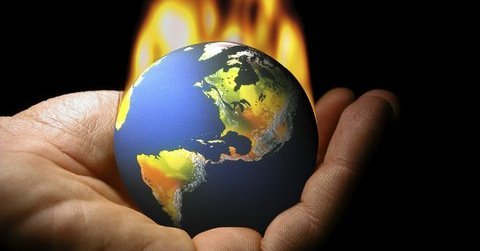In the context of the United Nations Framework Convention on Climate Change (UNFCCC) - as it was established after the Rio Earth Summit in 1992 - a series of talks are held on an annual basis by the highest body of the Convention, the Conference of the Parties (COP), which primarily consists of environment ministers. The 15th COP (CO15) is the official name of the Copenhagen Climate Change Summit which will take place in Bella Center, Copenhagen, from December 7, 2009 and will last for two weeks, while 192 countries and more than 15,000 officials, advisers, diplomats, campaigners and journalists are expected to attend. At the end of the talks, a new climate treaty would have been forged as the successor of the Kyoto Protocol (which sets greenhouse gas limits for its signatories until 2012) revealing the future possibilities of global cooperation against climate change; this is the reason why this Summit has attracted such a public attention.
The successful realization of such a venture entails responses to a number of questions and issues; first of all, which countries must make the cuts in their greenhouse gas emissions and for how long? For instance, Chinese economy has overtaken America as the world’s largest emitter of carbon dioxide, but historically, the US has emitted far more emissions. What is more, Chinese government declares its moral right to develop its economy without omitting - along with the other developing countries - to emphasize the responsibility of the US and the EU in the fight against climate change, something respectively done by the world’s developed countries.
Developing nations ask their industrialized counterparts to commit to sizeable CO2 reductions and to offer financial aid to fund their mitigation and adaptation measures.
Besides the divide line between the rich and the poor, which became obvious from the two rounds of global climate talks in Bonn (29 March - 8 April/1 June - 12 June respectively) for the adoption of a negotiating text in view of the COP15, another major issue that should be addressed is the reluctance of the developed countries to come up with concrete proposals, especially in relation to the funding of the poor countries. Therefore, the general picture a few months before the COP15 could be described as follows: on the one hand, developing nations ask their industrialized counterparts to commit to sizeable CO2 reductions (cuts of at least 40% below 1990 levels by 2020) and to offer financial aid (around 0.5-2% of their GDP) to fund their mitigation and adaptation measures, while, on the other hand, developed countries have not made any firm commitments yet, apart from the EU.
In fact, the EU is the only group of nations with a binding commitment (European Commission’s proposal, January 2009) to a 20% cut from 1990 levels by 2020 having additionally pledged to raise this to 30% if other developed nations take on comparable targets. As far as the funding mechanisms are concerned, the Environment Commissioner, Stavros Dimas, has also developed a general stance suggesting that developing countries should adopt far-reaching low carbon strategies, using domestic resources and regulation, which can mobilize and shift private sector investment towards cleaner technologies. Public funding will be provided by the international community to cover investments that cannot be financed with domestic resources. The US on the contrary maintain a vague stance towards all the issues of the COP15: while they had previously been focused on setting an 80% long-term reduction target for 2050 thanks to the environmental - friendly administration of the current US President, Barack Obama, have now indicated that they will push for strong mid-term targets as well, without further specifying.
However, the European Council of 19-20 March 2009 as well as the one of 18-19 June 2009 haven’t yet responded to the demand for the forging of a concrete EU stance well-before the Copenhagen Summit (based on the Commission’s proposal); the emphasis had, on the contrary, been given to the management of the financial crisis and the conclusions of the two summits were limited to the principles of the funding contribution (“the ability to pay and the responsibility for emissions”) and the sum of funding (“poor countries will by 2020 need about 100 billion euros ($140 billion) each year to cut carbon dioxide emissions, and a further 20-50 billion euros to cope with the impact on the climate”), without referring to the EU’s share in the finance mechanisms. This task has been left to the current EU Presidency of Sweden, a member - state with a long tradition on environmental issues.
The EU has claimed to have the leadership in the fight against climate change, a fact already proven by its dynamic environmental stance. It is important however to preserve this position by taking the initiative in relation not only to the finance mechanisms (without waiting from the USA first), but also to the strengthening of the cooperation between the US and itself. The latter is also of immense importance considering that the BRICs (Brazil, Russia, India, and China) will accept more easily their responsibility regarding the curb of their emissions in front of a united US-EU block during COP15. Finally, the need for a more decisive EU becomes an imperative especially in a period of global economic crisis, which - according to the European Commission President, José Manuel Barroso - “ought to be an impulse for change and not an excuse for inaction.”

Follow the comments: |
|
